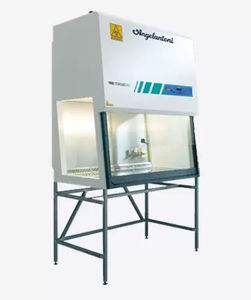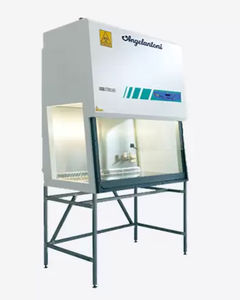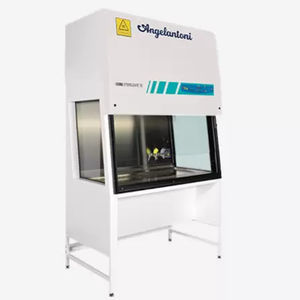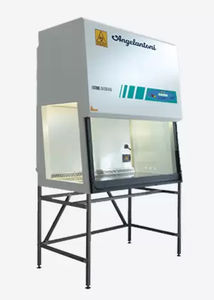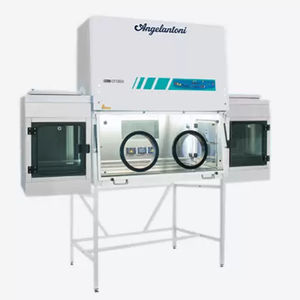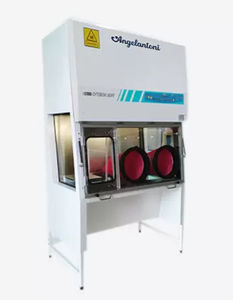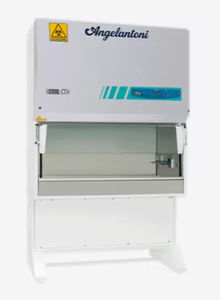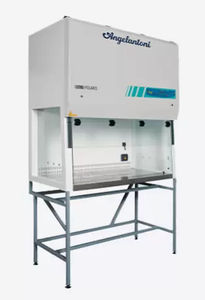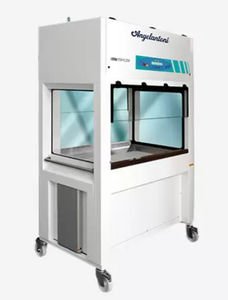
- Laboratory
- Laboratory infrastructure
- Class II microbiological safety cabinet
- Angelantoni Life Science

- Products
- Catalogs
- News & Trends
- Exhibitions
Class II microbiological safety cabinet VBHlaboratorymicrobiologyfloor-standing
Add to favorites
Compare this product
Characteristics
- Class
- class II
- Applications
- laboratory, microbiology
- Configuration
- floor-standing
- Certifications
- EN 12469
- Other characteristics
- laminar flow
- Window opening
Max.: 430 mm
(16.93 in)Min.: 200 mm
(7.87 in)- Sound level
57 dB, 58 dB, 59 dB, 60 dB
- External width
1,015 mm, 1,320 mm, 1,625 mm, 1,930 mm
(39.96 in, 51.97 in, 63.98 in, 75.98 in)- External depth
785 mm
(30.91 in)- External height
1,470 mm
(57.87 in)- Internal width
885 mm, 1,190 mm, 1,495 mm, 1,800 mm
(34.84 in, 46.85 in, 58.86 in, 70.87 in)- Internal depth
580 mm
(22.83 in)- Internal height
660 mm
(25.98 in)- Weight
185 kg, 215 kg, 260 kg, 300 kg
(407.86 lb, 473.99 lb, 573.2 lb, 661.39 lb)
Description
The series of Class II microbiological safety extractor hoods are designed and manufactured according to the performance requirements of EN12469: 2000 and are used in all situations where it is necessary to protect the operator and the environment from the harmful effects of uncontrolled spreading of airborne contaminants and, equally, to ensure that no environmental interference of a microbiological nature can affect the product during its handling.
These hood families have normally been used in Microbiology, Virology, Haematology and Cell Culture laboratories. They are increasingly being used in innovative fields of research and in particular for the manipulation of:
recombinant DNA
Oncogenic viruses
Pathogens
These hood lines are defined:
BIOHAZARD
Class II they are equipped with a partial frontal working opening allowing the suction of 30% of the total air involved at a minimum speed of 0.4 m/s and a recirculation system for the remaining 70% which is sent to the working area in laminar flow at an average speed of 0.4 m/s (as defined by EN 12469 standards).
Type A1, according to NSF 49 (U.S.A.) standards, can be used safely even if the expelled air coming from the frontal barrier is returned to the environment.
Type A2 as, according to NSF 49 (U.S.A.) regulations, the expelled air can be channeled towards the outside of the room where it is used (for further technical details see the dedicated paragraph).
Countertop model
Perforated AISI 316L work surfaces
Manual tilting glass
One power socket
Vacuum circuit with tap
Gas circuit with tap and solenoid valve
Related Searches
- Upright refrigerator
- 1-door refrigerator
- Laboratory freezer
- Laboratory refrigerator
- 1-door freezer
- Refrigerator with glass door
- Laboratory fume extractor
- Climatic test cell
- 2-door refrigerator
- Temperature test cell
- Stainless steel freezer
- Humidity test cell
- Biological safety cabinet
- Laboratory biological safety cabinet
- 1-door test cell
- Laboratory test cell
- Benchtop hood
- Box freezer
- Class II biological safety cabinet
- Chemical fume hood
*Prices are pre-tax. They exclude delivery charges and customs duties and do not include additional charges for installation or activation options. Prices are indicative only and may vary by country, with changes to the cost of raw materials and exchange rates.

